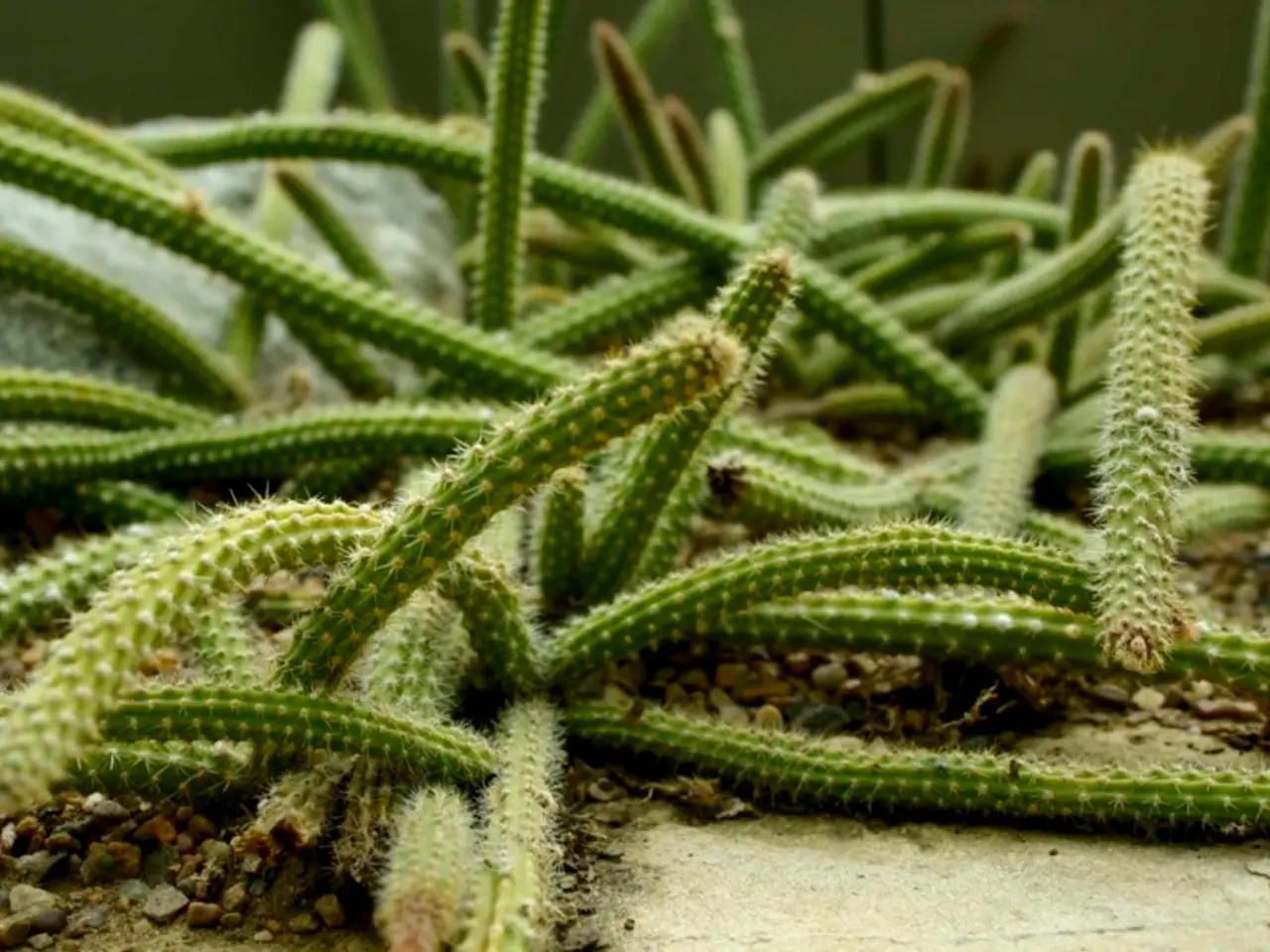Cultivating Adenium Flowers: Essential Tips for Adenium Plant Maintenance
The Desert Rose, scientifically known as Adenium obesum, is a popular houseplant that thrives in warm, sunny environments. Here's a guide to help you care for and grow this beautiful plant indoors.
Light
Place your Desert Rose in a spot with bright, direct sunlight for several hours daily. This plant thrives with ample sunlight indoors, which helps stimulate flowering and growth.
Water
Water when the top 1–2 inches of soil feel dry. Use room-temperature, filtered water if possible. Avoid overwatering or letting the plant sit in water to prevent root rot. In winter, reduce watering significantly as the plant goes dormant.
Temperature
Maintain warm temperatures between 65°F and 90°F (18°C to 32°C) indoors. Protect the plant from frost and cold drafts—bring it inside if temperatures drop below 60°F (15°C).
Soil
Use well-draining, sandy soil or a cactus/succulent mix to avoid water retention that causes root rot. Good drainage is critical for Desert Rose health.
Fertilizer
Fertilize during the growing season (spring through summer) with a balanced fertilizer formulated for flowering plants to support robust growth and blooms.
Common Issues and Solutions
- Root rot due to overwatering—ensure soil dries out between watering and use well-draining soil.
- Leaf drop or poor growth from insufficient light—move to brighter light conditions.
- Cold damage if exposed to frost or temperatures below 60°F—keep plant in stable warm environment.
- Pests such as spider mites or aphids may occasionally occur; inspect regularly and treat with insecticidal soap if needed.
Occasional pruning helps maintain a good shape and encourages branching.
These care guidelines replicate the Desert Rose’s native arid environment with warm temperatures, bright light, minimal water, and fast-draining soil inside the home.
Planting and Seeds
The best time to plant desert rose seeds is in spring. The seedlings of desert rose plants need moderate light and water even during the winter.
Growth and Maintenance
The height of the plant is possible 10 feet (3 m) but typically 2 feet (.61 m.) in containers. Seeds of desert rose plants will germinate quickly, within 3-7 days, if planted in a moist, gritty medium.
Pests and Fertilizer
Outdoor desert rose plants may exhibit distorted leaves due to attacks from aphids, scale, mealybugs, and spider mites. Horticultural soap or household alcohol can be used to combat these pests on desert rose plants. Fertilize monthly during the growing season, with a higher phosphorus and potassium formula for mature plants, and suspension from fall through winter.
Additional Tips
Do not allow water to accumulate in the saucer under the container for desert rose plants. Adenium requires 2 clones to develop a viable seed. The spread of the plant is similar to its height. Indoor temperature tolerance is suitable if below 60 degrees Fahrenheit (15.56 C.) in spring and above 50 degrees Fahrenheit (10 C.).
A well-cared-for Desert Rose in an indoor setting not only thrives but also enhances the home-and-garden lifestyle, especially with its appealing blossoms that add charm to the living space. Gardening enthusiasts may be further intrigued by attempting to plant and grow Desert Rose seeds from their own seeds during the spring season, which could potentially become a captivating addition to their home-and-garden lifestyle.



